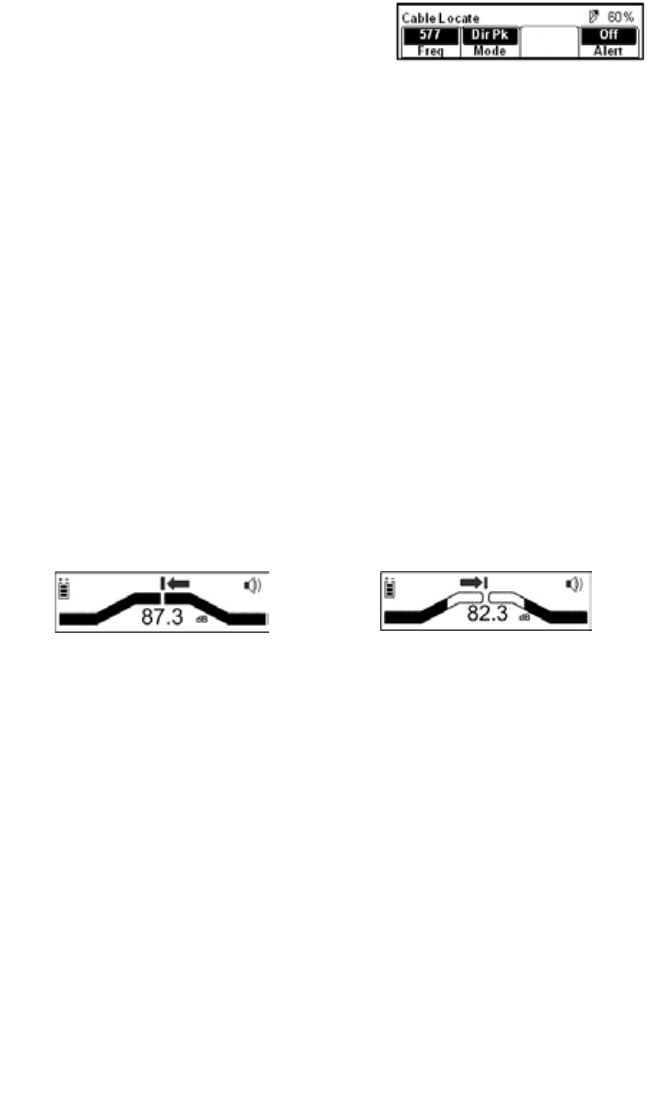
36 78-9000-0192-2 Rev C
Step 12. Set the Frequency and Mode of the receiver.
a. Press Freq [SK]
b. Select the same frequency on the
receiver that was selected on the
transmitter by pressing Active [SK
Toggle].
c. Press Menu/OK [5] to save the setting
and return to Locate mode.
d. Press Mode [SK Toggle] until Dir Pk is
displayed.
Step 13. Stand away from the suspected target path and adjust the Gain [3] down until
the Bar Graph [11] ([10] for 2550 locator) opens completely.
Step 14. Walk in a wide circle with your back toward the transmitter (about 10 to 15 feet
(3 to 4.5 m) away).
− Watch the receiver display and listen to the signal. Take note of where the
receiver detects the strongest Signal Strength [9] ([8] for 2550 locator).
− The Bar Graph [11] ([10] for 2550 locator) will close when the unit detects
a signal, and the arrows will reverse.
− Adjust the Gain [3] down if the Bar Graph [11] ([10] for 2550 locator)
closes completely.
− The Signal Strength [9] ([8] for 2550 locator) numbers on the display will
change with the signal strength (smaller, as you walk away from the target
path; larger, as you approach the target path).
− Make a complete circle around the transmitter. Return to each point in the
circle that the receiver detected.
Step 15. Measure the Depth and Current of each point to identify the target path. The
depth of the target path should be as expected and the relative current should
compare to the relative current that is alternately flashing with the frequency
value on the transmitter.
Note: The Relative Current reading will decrease steadily as the locator moves away
from the transmitter. When using higher frequencies, this decline is more evident.
Step 16. Adjust the gain so that the Bar Graph [11] ([10] for 2550 locator) responds to
the target path (open when off path, almost completely closed when directly
over target).
Step 17. Trace the cable/pipe at a slow walk while moving the receiver in a side-to-side
motion, keeping the receiver perpendicular to the ground.


















